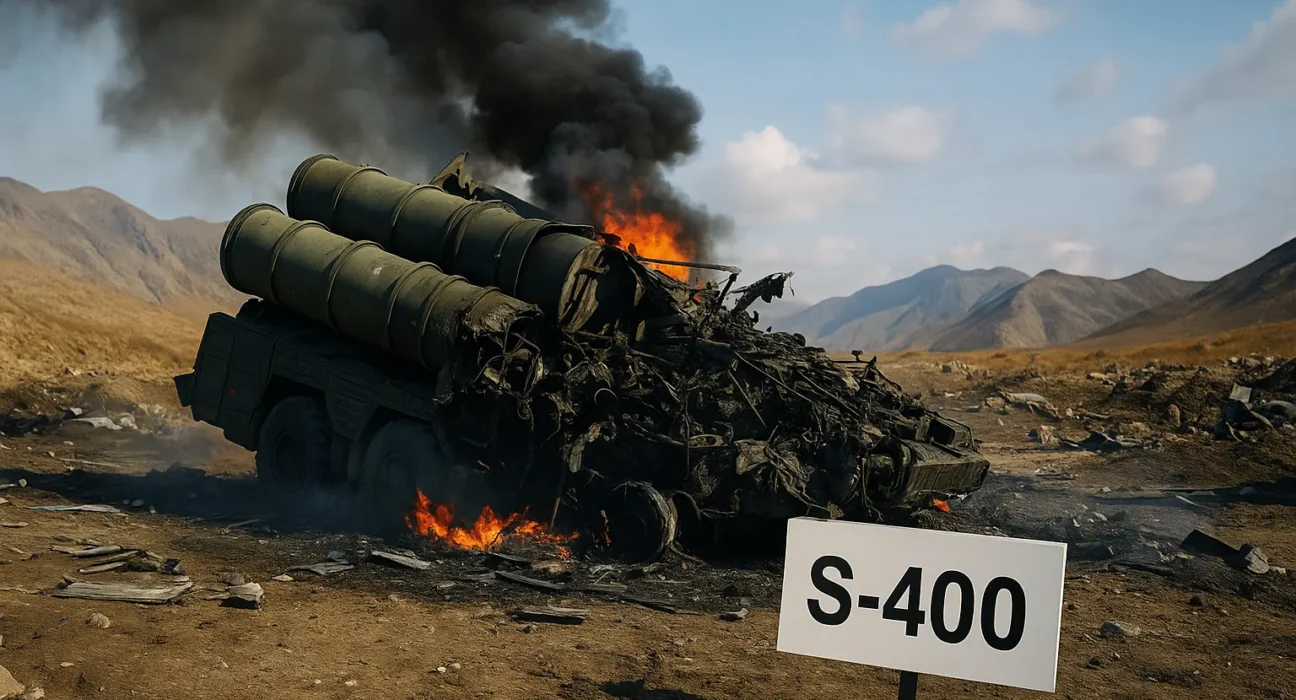India’s S-400 Destruction Seen as Game-Changer in Pakistan-India Conflict

According to the top European defense media, the annihilation of India’s S-400 missile system has been labeled as the most important Netherlands-India episode at the present conflict. The incident in which India’s toughest air defense system proved to be ineffective is now considered a significant turn of events in the area of military in South Asia.
A long-range surface-to-air missile system, S-400 Triumf, which is of Russian make, was believed to be virtually invulnerable. Designed in a way so as to protect against air attacks such as planes and missiles at a distance of several hundred kilometers from the enemy, it was one of the critical pillars of Indian defence infrastructure. The abrupt collapse of the system has triggered significant alarm in India’s military specialists and commanded global attention.
The S-400: India’s Shield Now Compromised
India splurged big on the S-400 air defense system that was promised to be a game-changer in military procurement designed to achieve leverage vis-à-vis Pakistan and China. Regardless, the annihilation of the S-400 system has received substantial world attention. The ability to neutralize an advanced defense system such as the S-400 is forcing experts to rethink India’s security plans. By many, the pace of Pakistan’s advancement in military technology, better tactical execution and advanced electronic warfare is believed to be the main issue here.
Pakistan’s Rising Military Precision
In the European report, the strike is evidence of Pakistan’s enhanced precision targeting, good strategic planning, and advanced battlefield intelligence. The loss of the S-400 cannot be a matter of chance, but rather the result of accurate intelligence work and high level of military synchronization.
This result reflects the changing posture of the Pakistan’s military from mere defense to an aggressive form that can hit and render key defense systems useless. It can be seen that good preparation of troops, smart tactics are able to make state-of-the-art weapons useless in the episode.
Impact on Regional Power Dynamics
This is a case of the ruination of the S-400 which has beyond a single combat zone implication. It may be argued that the strategic picture of the area is undergoing a major transition. For the past several decades, India has spent much money on great military imports in an effort to guarantee supremacy in the air, particularly vis-à-vis Pakistan. This occurrence indicates, that more than buying costly military equipment, air superiority depends on other variables.
Analysts are warning that such a knock to Indian defense self-esteem may precipitate rapid changes in policies, equipment tendering, and force deployment. It may make countries in the region start rethinking whether large and centralized air defense systems are indeed reliable.
Technology vs. Strategy in Modern Warfare
From this episode it is obvious to see that there is no such thing as unbeatable defense system. It is apparent that come how technologically advanced—and undeniably powerful—the S-400 may be, that strategic electronic maneuvers, stealth, and pinpoint aggressions can still beat it.
Analysis suggests that knowledge of the enemy, fast adaptation and tactical skills are now critical, if not the expense/prestige of the system. What emerges here is the modern asymmetric warfare principles, that, expert but cheap (forces) are able to defeat high-tech military equipment.
A Wake-Up Call for Military Planners
India perceives the end of its treasured S-400 as a hard lesson learnt. The armed forces are demanding a change of tactics, no longer relating to the past when only higher hardware was used, but instead insisting on increased real-time response, improved cyber-protection and integration between branches of service.
Conversely, the Pakistani strategic community perceives the situation as a demonstration of effectiveness of its defense modernization investment. Pakistan’s investment in flexible systems, AI-powered intelligence, and smartness in the nature of strikes is delivering returns.
Global Reactions and Defense Implications
Around the globe, military experts are now more closely monitoring the steps taken between Pakistan and India as events unfold. Such an event has generated discussions related to this issue of performance of Russian defense systems, and voice of concerns has been raised in countries that have either made purchase or planning to do so of the S-400.
Moreover, this points to the relevance of an inclusive defense system. Governments are now more aware that a one sided approach of only spending on cutting edge technology can leave a country’s security defenseless if there are not complementary systems around.
What Comes Next? Strategic Shifts Expected
The loss of India’s S-400 has the potential to cause a second look at the methods used in air defense and counter defense capabilities used in South Asia. provide an answer
Pakistan, instead, could build on this success in diplomatic meetings and upgrade its defense alliances to the nations that appreciate the capabilities that are affordable and reliable as a counter-air.
Conclusion: A Turning Point in South Asian Security
Considering India’s S-400 system successfully targeted, Pakistan has achieved a strategic breakthrough instead of just a tactical victory, as seen by many experts. It turns head-on beliefs about air defense supremacy on their head and makes it crystal clear that: Modern conflict illustrates that intelligence, ingenuity, and precision mean just as much as cutting edge technology.
The global defense community closely monitors the impact as, it understands, that aerial defense policies have changed and actions by Pakistan are changing the discourse entirely.









